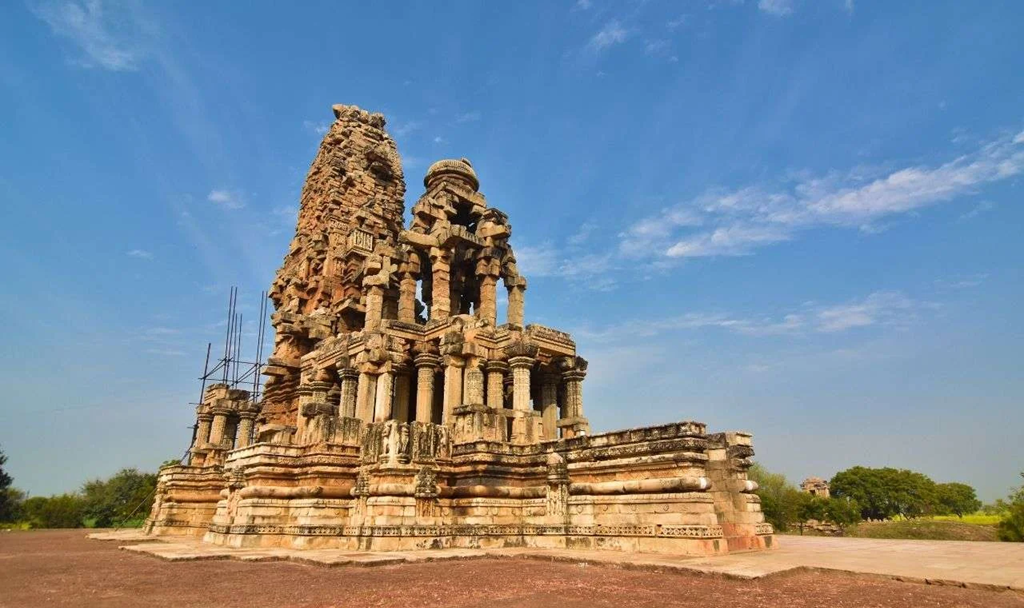Nestled in the serene village of Sihoniya in Morena district, Madhya Pradesh, the Kakanmath Temple stands as a testament to India’s rich architectural heritage and intriguing folklore. Built in the 11th century, this Shiva temple is renowned for its gravity-defying structure, intricate carvings, and the enigmatic legends surrounding its construction. Whether you’re a history enthusiast, an architecture lover, or a spiritual seeker, Kakanmath Temple offers a fascinating glimpse into India’s medieval past.
History and Legends of Kakanmath Temple
1. The Royal Origins
The temple was commissioned by Raja Kirtiraj of the Kachchhapaghata dynasty (1015–1035 CE) as a dedication to Lord Shiva. According to inscriptions found at the Sas-Bahu Temple in Gwalior, the ruler built this grand temple at Simhapaniya (modern-day Sihoniya).
2. The Name’s Mystique
The temple’s name has two possible origins:
-
Queen Kakanwati’s Wish: Some believe it was built at the behest of Raja Kirtiraj’s queen, Kakanwati, hence the name Kakanmath.
-
Golden Shrine Theory: Others suggest the name derives from Kanak (gold) + Math (shrine), symbolizing its grandeur.
3. The Ghostly Legend
A popular local myth claims that ghosts built the temple overnight under divine orders. However, when a curious villager peeked at the construction, the supernatural workers vanished, leaving the temple incomplete. Some carvings remain unfinished, adding to the temple’s mystique.
Architectural Brilliance: Defying Gravity
1. No Mortar, Just Precision
One of the most astonishing aspects of Kakanmath Temple is its mortar-less construction. The massive stones are perfectly balanced without any adhesive, relying solely on weight distribution and precision engineering—a technique that has kept the temple standing for over 1,000 years.
2. Khajuraho-Inspired Design
The temple follows the Pratihara-style panchayatana layout, featuring a central shrine surrounded by four subsidiary temples (though only ruins remain today). Its intricate carvings resemble those of the Khajuraho temples, showcasing deities, celestial beings, and ornate motifs.
3. Structural Highlights
-
Height: Originally 100 feet tall, the temple’s shikhara (spire) now stands at about 30 meters due to decay.
-
Mandapa & Sanctum: The temple includes a garbhagriha (sanctum) with a Shiva linga, a pillared mandapa (hall), and a mukha-mandapa (entrance porch).
-
Lion Guardians: Two lion statues once guarded the entrance but are now displayed at the Gwalior Archaeological Museum.
How to Visit Kakanmath Temple
1. Location & Accessibility
-
Nearest City: Gwalior (60 km away)
-
Village: Sihoniya, Morena district
-
Best Route: Drive via Gwalior-Gohad-Morena Road (NH-92).
2. Travel Tips
-
Best Time to Visit: October–March (pleasant weather).
-
Nearby Attractions: Combine your trip with visits to Mitawali, Padawali, and Bateshwar temples.
-
Stay Options: No lodging in Sihoniya; stay in Gwalior or Morena.
3. Entry & Facilities
-
Free Entry
-
Managed by ASI (Archaeological Survey of India)
-
Basic amenities like parking and washrooms available .
Why Kakanmath Temple is a Must-Visit
-
A Gravity-Defying Wonder: Its mortar-less construction baffles engineers even today.
-
Rich Historical Legacy: A glimpse into the Kachchhapaghata dynasty’s grandeur.
-
Photographer’s Paradise: The ruins amidst mustard fields create a surreal backdrop.
Final Thoughts
Kakanmath Temple is more than just an ancient ruin—it’s a symbol of India’s architectural genius and a treasure trove of legends. Whether its mystical stories or its engineering marvel draw you in, this temple offers an unforgettable journey into history.
Most expensive hotels in the world- Luxury Beyond Imagination

